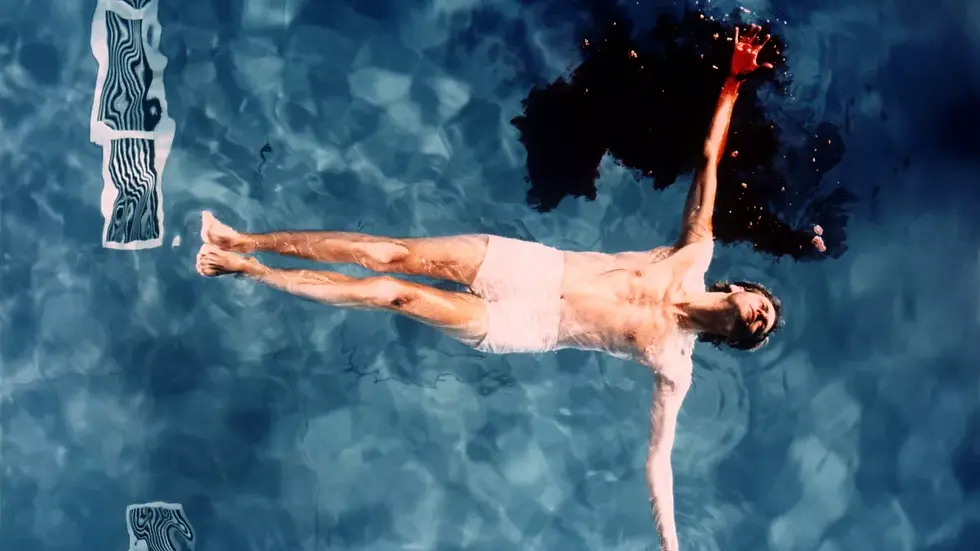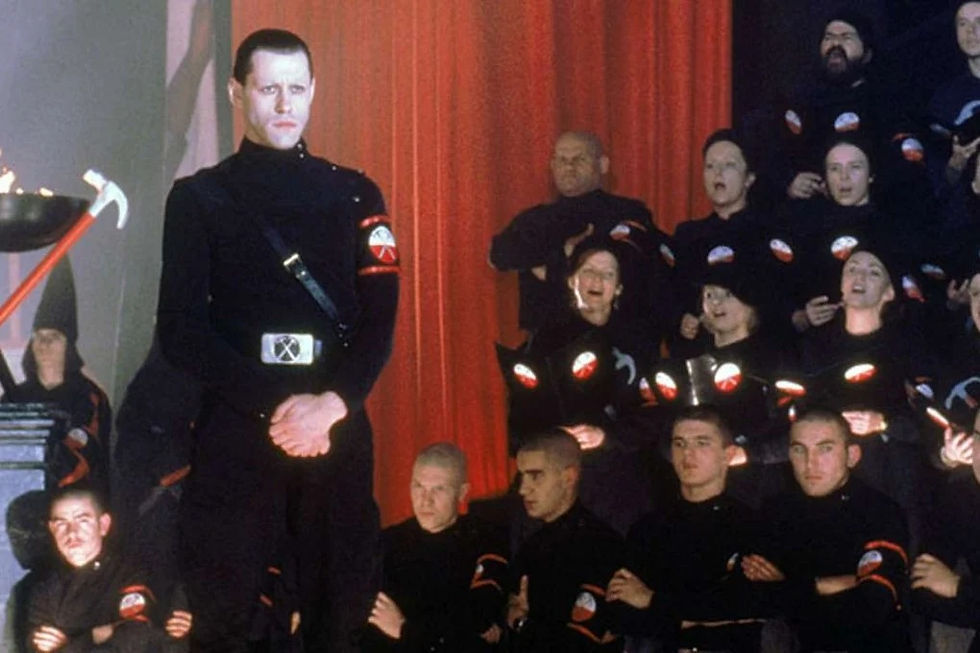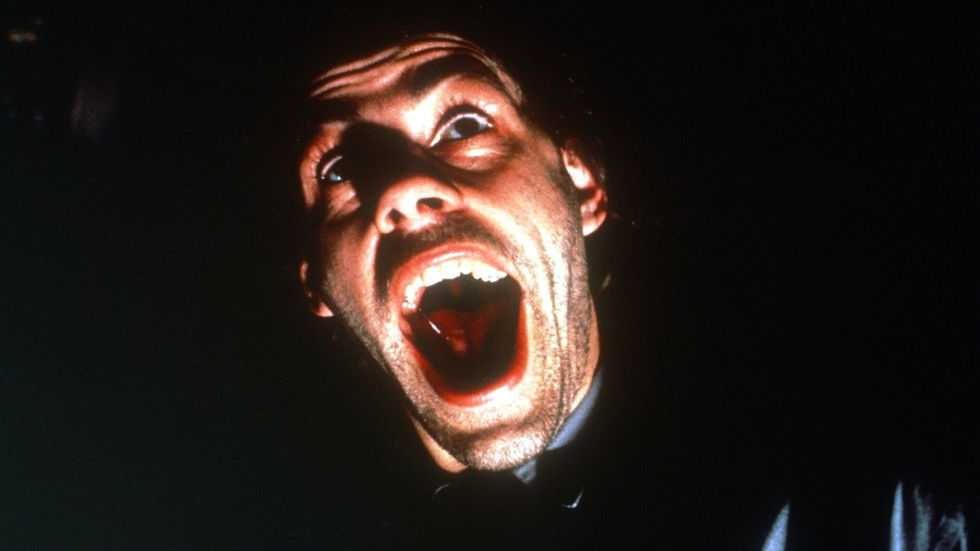The Mad Genius of THE WALL
- John R. Fultz
- Oct 3
- 9 min read

"So you... thought you... might like to...
go to the show..."
Pink Floyd's legendary 1982 film THE WALL has always been my favorite film, even if I didn't quite fully understand it. For a long time, all I knew is that it was a tour de force of music and images that took me on a journey unlike anything else I had ever experienced.
I first saw the film at the age of 15 at my best friend's house on VHS circa 1985. We were suitably blown away by it, but neither of us knew quite what to make of it. It was a masterwork that melded modern rock-and-roll with cinematic storytelling to create a transcendental and psychedelic experience. I already loved the album at that age (which had come out three years earlier in 1979 and was already a legend itself), but the film takes the entire concept to a whole new level.
The second time I saw THE WALL was in my mid-20s at an arthouse cinema in Lexington, Kentucky, with my girlfriend. It was a midnight showing, and there were a lot of stoners and neo-hippies who came out to experience this musical spectacle on the big screen--most of us for the first time. Once again, I was completely blown away and shaken to my emotional core by the film. I understood it far better this time around, being older and a bit wiser, having a far more developed musical sensibility, and getting the full-screen experience--not to mention being a college graduate well-trained in analyzing literature and art. But I still didn't quite understand ALL of what this brilliant film (and the fantastic album that inspired it) was saying.

Now I'm about to turn 56, and I just watched THE WALL again. I'm now fifteen years older than Roger Waters--who wrote the screenplay and most of the songs on the album--was when this movie was made. I've seen American democracy challenged, broken, and begin to fade. I've now seen my country fight three wars, one of which lasted over two decades. In other words, I'm now even older and even wiser than I was when I watched THE WALL in that cozy theatre.
THE WALL is initially all about Roger Waters' scarred psyche, a victim of a missing father who died in World War II, and how his fatherless upbringing led him toward the life of the "tortured artist"--someone so lost inside his own damaged psyche that he was incapable of relating to his fellow human beings. Thus, the metaphorical "wall" that separates him from the entire world, most specifically those who love and care for him. The story was also inspired by the real-life tragedy of former Pink Floyd member Syd Barrett, whose very real mental illness drove him to leave the band and abandon music altogether in the late 60s, eventually becoming a haunted recluse.

There can be little doubt that Roger himself identified with the mental and emotional struggles that Syd had endured. He and the band had already done a whole album dedicated to Syd and his heartbreaking fall from grace (1975's WISH YOU WERE HERE, which came out only four years before THE WALL album). The protagonist of the movie, "Pink," is a stand-in for Roger Waters himself--or perhaps a composite of Roger and Syd as one. Pink is a rock star whose mental decline seems to begin when his marriage disintegrates and his wife begins having an affair on him. In reality, Roger had just gone through his first divorce in 1975, and there is a special kind of hellish pain when a bond between two souls is broken--or ripped apart. Nothing hurts quite like divorcing someone you loved with all your heart.

Pink isolates himself and loses all touch with reality, and the "wall" that separates him from his fellow humans only grows stronger and larger. But it's his life as a rock star--an Artist--that allows him the freedom and the isolation to completely cut himself off from humanity. We see constant flashbacks to his fatherless childhood, as the lyrics relate the pain of losing his father and growing up in the shadow of his mother and the cruel educational establishment that tried to squash all the "artist" out of him.
In an infamous scene, Pink snaps out of his near-catatonic state and begins destroying his hotel room, only to re-assemble all of the wreckage into a huge circuit-board art project on the floor of his demolished hotel room. He's literally making art from the broken pieces of his life--turning trash into something creative yet ultimately pointless. He's still cut off from his own humanity, literally bleeding and screaming for human contact but unable to make it work. "Is there anybody out there?" He's completely encased in the "wall" that's keeping him from love, connection, and emotional stability. "Crazy...toys in the attic..I am crazy...they must have taken my marbles away..."

Then the Rock Star Machine kicks into gear. Pink's manager needs him to go on--the show is about to start--he's got a huge concert crowd waiting for him. So they inject him with some kind of drug--probably heroin, if we follow the 1970s rock-and-roll mythos as a clue. "That'll keep you going for the show...come on it's time to go." At this point he becomes "Comfortably Numb," as they drag him to the limo which takes him to the stage. Yet along the way he metamorphosizes into something new and different and strange and cruel...

Coming out of his psychic cocoon, Pink is now a full-on fascist, whose fans worship his every word and start turning on members of their own crowd, committing acts of violence spurred on by their Beloved Leader's racist, homophobic, and fascist commands. Pink has truly lost his mind as he dresses in Nazi fashion and takes the emblem of the Crossed Hammers as his insignia, in a scene intentionally reminiscent of Nazi rally with himself in the role of an Adolf Hitler figure, i.e. the ultimate fascist.
The movie at this point has turned from a character study exploring the broken psyche of a tormented artist into a political screed exploring the roots of fascism, authoritarianism, and the cult of personality that drives these dark movements. Fascist leaders are created because of CELEBRITY--the same element that creates rock stars--fascist rulers are broken humans with stunted empathy, or no empathy at all, blaming their problems and their pain on others in a mad search for victims. These authors of violence and civil unrest are also the ones who have created the worst wars in history--fascist nationalism created World War I and fascist Naziism created World War II. These broken individuals, these emotionally stunted human beings, sometimes rise to great heights and end up with millions of followers.

Narcissists, sociopaths, and sadists become the worst possible leaders and set the worst possible examples for the multitudes that follow them. The cult of personality that brought Hitler, Mussolini, and Stalin to power is the same principle that has brought Donald Trump and his New Fascism into power in early 21st Century America. Trump is a deeply flawed human being who covers up his insecurities with a fake bravado that insists he is absolutely perfect and can do no wrong. And the most terrifying thing about it is that his followers buy into this mythology, just like Adolf's, Benito's, and Joseph's followers did. Just like Pink's followers do in the movie as they run through the streets assaulting and accosting whomever they find undesirable.

Watching the movie now, I couldn't help but think of Marilyn Manson--another broken human being, tortured artist, and accused abuser of women. Another victim of celebrity and the rock-and-roll lifestyle that encourages and exacerbates mental instability and personality disorders in artists. (Manson is my age, and he grew up on THE WALL too, so he is well aware of its iconic imagery and symbolic messages.) I couldn't help but think of Kanye West, whose own mental instability has been well-documented, and who has raved many times about his very real admiration for Adolf Hitler and the Nazis. And then I thought about all the rock stars of my generation who were victims of their own rock-and-roll lifestyles--the heroin addicts like Layne Staley, Shannon Hoon, and Andrew Wood. I thought of the great Perry Farrell, who has been dealing with his own mental issues over the past couple of years, to the point of losing lifelong friends and colleagues. Perry Farrell, perhaps the leading rock icon of my generation, who once said publicly: "This rock-and-roll will kill you." Wise words that were largely ignored by the world at large.
Fame, celebrity, cult of personality, and mental illness--these are the factors that create mad rock stars and fascist movements alike. I think this is what that entire fascist trip-out sequence in THE WALL is all about. It's a warning, perhaps a prophecy, that applies to history as well as future history. But people never listen, and Americans love a good villain. So you get what we have today--an America slipping slowly but surely into fascism thanks to a damaged leader who is worshipped like a religious figure. And it's not lost on me that Pink's (i.e. Roger Waters') father died fighting against fascism in World War II.

After this grand political statement that was way ahead of its time in 1982, THE WALL returns to the personal fate of Pink. He's found completely mad now, curled up in a public restroom stall mumbling poetry and sipping toilet water. Then comes "The Trial," which is one of the movie's most powerful animated sequences, and we don't know if he's actually put on trial, or if the entire thing is going on inside his tormented mind. The result is the complete destruction of the "wall" that has kept his heart and emotions isolated from his fellow humans for so long--we see that wall explode into rubble, and the final shot is a group of children--perhaps war orphans like Pink/Waters--digging through the rubble.
What to make of this? What does the demolition of the wall represent? Death? Healing? The terror of being exposed at the deepest level? After forty years of admiring and contemplating this film, I think I understand that now, too. By creating art--in the form of a concept album that later become a conceptual film--Waters was exposing his deepest self, his broken psyche, his tragic failing as a human being: His inability to connect with other human beings. The ONLY way he can do that is through art! The ONLY way he has to connect with his fellow humans is through art--because he cannot do it through relationships. So he writes songs, and albums, and movies. Art is a bridge between spirits, and artists turn their pain into something that can be shared with others. They turn their own suffering into entertainment and sometimes even enlightenment. That's what Roger Waters was doing when he "exploded" the wall that penned him away from humanity --sharing his innermost pain and personal failings--as well as how the music industry made all of these things worse in its eternal quest for The Show That Must Go On. Exposing his own human weaknesses was the only way to "tear down the wall." It takes a whole lot of courage to do that, but it's what real artists do.

Consider that Roger has been married and divorced four times since 1969. He is currently married to his fifth wife, and perhaps he too is older and wiser than he was when he wrote THE WALL, and maybe he's learned how to be a better partner and husband and human being. Consider also that Roger had a public and nasty ongoing feud with his former bandmates in Pink Floyd, especially guitarist David Gilmour. They used to make such amazing music together, but their falling out became one of the most legendary feuds in the history of rock-and-roll. To this day, there is no relationship left between Rogers and the legendary band that made him famous and allowed him to expose his deepest self to the world, i.e. tear down the wall of his imperfect self in the name of art. Trouble with relationships? I'd say his personal history definitely fits the bill.

I find myself identifying with Roger's "wall" because all my life I've had trouble with relationships too. For a while, I too was obsessed with music and my intention for most of my young adult life was to be a professional rock musician. It's difficult to keep any band together, but when the band is composed of young men who begin to hate each other, forget about it. I've been married only once, but that ended in a painful divorce, and I've been alone ever since. I don't "do" relationships, because I don't really know how. I, like Roger, was raised without my father. (He didn't die in a war, but he might as well have; he simply was never there when I needed him.) I've spent my life making art that expresses my inner self as well--as a young man it was music--but for the last twenty-five years it's been storytelling in the form of short stories and novels. My art is my connection to the greater world, just like Roger's. And Pink's. And so many other damaged human beings who channel their pain and frustration into artistic endeavors.
So, I finally feel like I understand the movie I have adored and admired for so long. THE WALL is one of the single greatest pieces of art to emerge from the 20th Century. Yes, it includes a political message, one that is inciteful and cautionary, but also unavoidable--or so it seems. Some folks don't like it when art gets political, but I have to salute Roger Waters and Pink Floyd for this towering artistic achievement that is simultaneously both personal and political. I watch it and I see my own personal struggles mirrored in Pink's character. I see the struggles of our nation mirrored there as well, as we slip into a post-democratic era where fascism has taken hold while mainstream media refuses to acknowledge it or resist it. I see the cracks in the wall, and I recognize the humanity behind it.
Great art inspires great art. Without it, life would be unbearable.
"After all it's not easy banging your heart against some mad bugger's wall..."





Comments